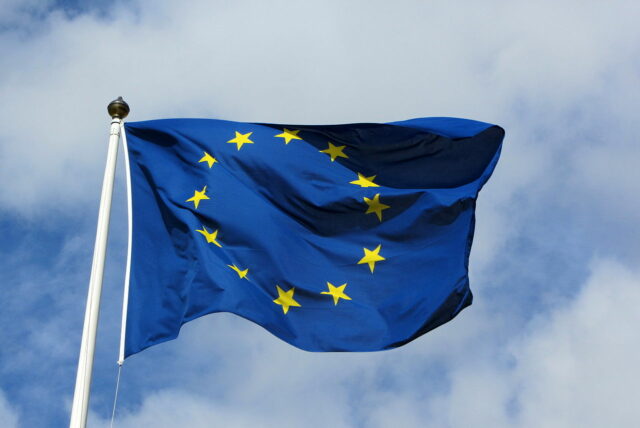
Geopolitical Report ISSN 2785-2598 Volume 38 Issue 2
OSINT Team
The evolution of EU strategy towards Central Asian countries, transitioning from aid-driven reforms to a strategic focus on energy security and cross-country cooperation, has entered a new phase in 2022.Geopolitical considerations increasingly influenced the European Union’s engagement, particularly in countering Russian and Chinese influence. Notably, the EU is pursuing alternative transport routes, institutionalising relations, and emphasising priority areas like energy and digital technologies. Through a multi-vector policy, the Central Asian countries maintain strategic balance amidst global tensions.
Key Findings
- EU Geopolitical Shift. EU policy in Central Asia has developed from economic assistance to strategic geopolitical considerations, aligning with efforts to reduce dependence on Russia and China.
- Alternative Transport Routes. The EU is actively exploring alternatives to Russian-dominated routes, with a focus on the Middle (Trans-Caspian) corridor, and aims to engage Central Asian countries in its Global Gateway project.
- Institutionalisation and Priority Areas. The institutionalisation of EU-Central Asia relations is clear through summits and conferences. Collaboration is prioritising energy, transport logistics, and digital technologies as key areas.
EU Strategy in Central Asia:
Background Information
Since the 1990s, the EU’s engagement in Central Asia has progressed from internal economic reforms to recognising the region’s significance for energy security. Cooperation expanded to security matters post-2001, with a 2007 doctrinal document outlining areas like human rights, economics, ecology, energy, security, and transport.
The 2019 strategy update shifted focus to cross-country cooperation and commercial interests, particularly with Kazakhstan and Turkmenistan.
Latest meeting and forum, such as that organised in May 2023 in Almaty, confirmed Brussels’ strategy in the region and Central Asian republics’ desire to be more engaged with EU.
Central Asia: Geopolitical Analysis
Central Asia, with its rich geopolitical significance, abundant energy resources, and historical role as a crossroads between Europe and Asia, has been a perennial arena for global power struggles. The region’s historical context, epitomised by the ‘Great Game’ in the 19th century and the Cold War dynamics during the 20th century, underscores its enduring importance.
In the contemporary geopolitical landscape, Central Asia is central to Mackinder’s Heartland theory, with control over the region seen as influential in shaping global destinies. Zbigniew Brzezinski accentuated the imperative for the United States to prevent the rise of regional powers, such as the Soviet Union in the past and China in the present, which could potentially challenge US interests and global primacy.
The EU strategy for Central Asia reflects the region’s strategic significance and aims to deepen cooperation through a modern non-exclusive partnership. Recognising the diverse internal conditions and peculiarities of each Central Asian state, Brussels’ plan contrasts with the policies of China, Russia, while concurrently might contrast or support US strategy in the region.
Indeed, Central Asia holds a pivotal position in Beijing’s Belt and Road Initiative, which seeks to bridge Europe and Asia and enhance trade relations. Chinese investments in the region have played a significant role in supporting political and socioeconomic development.
Russia considers Central Asia as part of its historical and cultural blizhnee zarubezhe (near abroad), and aims to preserve influence with military bases and education (promotion of Russian language schools).
The United States, although closing its NATO Liaison Office in Tashkent in 2017, remains engaged in the region, particularly in cultural diplomacy and trade, aiming to preserve a presence as a deterrence against regional players like Russia, Iran, and China.
Therefore, the current phase of EU policy in Central Asia reflects a geopolitical shift influenced by Brussel’s tensions with Moscow and Beijing. Emphasis on alternative transport routes and engagement in the Global Gateway project underscores a strategic agenda to reduce dependency.
Risk Assessment
The evolving EU strategy poses risks of heightened geopolitical tensions in the region, affecting relationships with Russia and China. Potential competition over energy resources and transport routes may escalate regional dynamics. The Central Asian countries, while benefitting from strategic flexibility, face the challenge of navigating increasing external pressures and the potential consequences of geopolitical realignments.
Scenarios Analysis
- Deepened EU-Central Asia Engagement. Further institutionalisation and collaborative efforts lead to enhanced economic and strategic ties, reducing dependence on Russia and China.
- Increased Geopolitical Tensions. Escalation of EU-Russia and EU-China tensions in the region could lead to a challenging environment, impacting economic and political stability.
- Regional Balancing Act. Central Asian countries continue leveraging multi-vector policies, balancing Brussels’ engagement with relations with Moscow and Beijing, fostering resilience amid global uncertainties.
Conclusion/Recommendations
The EU’s strategy in Central Asia presents both opportunities and challenges. To mitigate risks, sustained diplomatic efforts are crucial. Encouraging active participation from Central Asian countries in shaping the growing engagement can foster stability and contribute to the economic and geopolitical resilience of the region.
The monitoring of Central Asian dynamics holds paramount importance, given that regional cooperation and cohesion are indispensable for the overall prosperity of the area. The stability of the region depends on successfully managing challenges from neighbouring Afghanistan, compounded by regional issues such as water scarcity.
The influence of external players, including Russia, China, India, Iran, Turkey, and Gulf Arab monarchies, adds a layer of complexity. While collaborative efforts can contribute to regional stability, the potential for destabilisation is consistent, posing risks to vital trade and transport projects.
The interplay of these factors underscores the need for vigilant oversight and strategic diplomacy to navigate potential pitfalls, ensuring that Central Asia remains on a trajectory towards sustainable development and resilience in the face of multifaceted challenges.
For those with an interest in acquiring comprehensive insights into the dynamics of Central Asia, we encourage you to reach out to our team by sending an email to info@specialeurasia.com. We are poised to facilitate an assessment of the opportunity for you to obtain a meticulously crafted and specialised report tailored to your intelligence needs.
